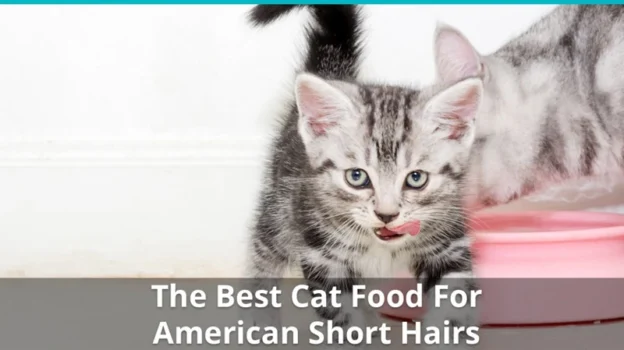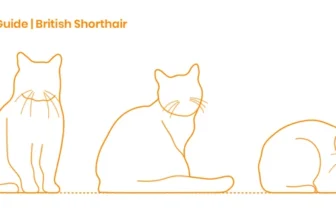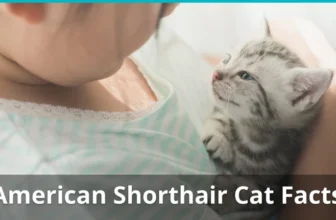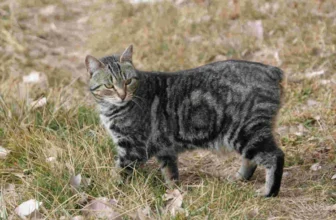Introduction
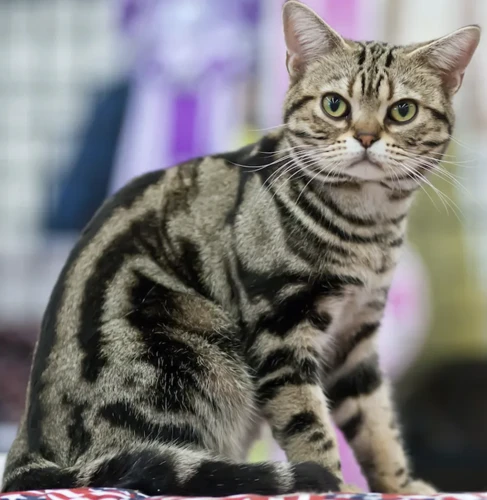
Caring for your American Shorthair cat can be a rewarding experience, but it requires knowledge and commitment. As a cat owner, you have a responsibility to keep your pet happy and healthy. From nutrition to grooming to medical care, there are many aspects to consider. In this guide, we will cover the crucial steps you need to take to keep your American Shorthair healthy and thriving. Whether you’re a new cat owner or an experienced one, you’ll find valuable tips and information that can benefit your feline friend. Let’s get started!
About American Shorthair Cats
American Shorthair Cats are one of the oldest cat breeds in America and have been around since the time of the pilgrims. They are known for their muscular build, round faces, and big, broad ears. These cats have a medium-sized body and come in various colors and patterns. Here are some fascinating facts to know about this breed:
- Personality: These cats are gentle and friendly and make great companions for families. They are also known for their affectionate, playful, and loyal nature.
- Shedding: American Shorthair Cats have short hair and are low maintenance in terms of grooming. However, they do shed throughout the year, so regular grooming is recommended.
- Health: This breed is generally healthy and has a lifespan of around 15 years. However, they are prone to certain health issues like dental problems, allergies, arthritis, urinary tract issues, and diabetes. As a responsible pet owner, it’s essential to be aware of these conditions and take preventive measures.
- Diet: American Shorthair Cats require a well-balanced diet with essential nutrients to maintain good health. Feeding them high-quality cat food and understanding portion sizes is crucial to keep them healthy. If your cat has special dietary needs or allergies, it’s essential to consult with a veterinarian.
- Exercise: Although these cats are not as active as some other breeds, they still need regular exercise and playtime to maintain good health. Encouraging your cat to play with interactive toys and providing them with a scratching post can be beneficial for their physical and mental stimulation.
- Veterinary Care: Regular vet checkups and preventive care are crucial to detect any potential health issues early on. It’s recommended to schedule annual checkups as American Shorthair Cats are prone to certain genetic health issues that require close monitoring.
As with any pet, it’s important to provide your American Shorthair Cat with proper care and attention. By ensuring a healthy, balanced diet, regular exercise, and medical care, you can promote their well-being and enjoy many happy and healthy years together. If you’re interested in learning more about common health issues in American Shorthair Cats, you can read our article on health issues in American Shorthair Cats.
Nutrition
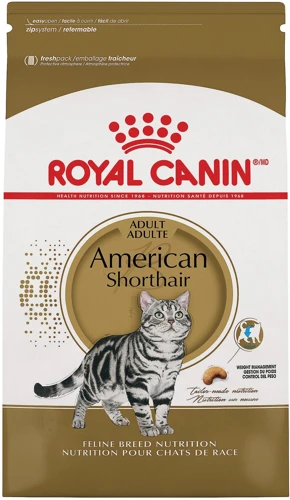
When it comes to keeping your American Shorthair cat healthy, nutrition plays a crucial role. Feeding your cat a well-balanced diet can prevent many health issues and keep them feeling their best. It’s important to choose the right food and understand portion sizes to meet your cat’s unique needs. Let’s explore some tips for ensuring your feline friend receives the nutrition they need to thrive. To learn more about preventing health issues related to nutrition, check out our article on special dietary needs for American Shorthair cats.
Choosing the Right Food
Feeding your American Shorthair cat the right food is essential for their health and wellbeing. Here are some tips for choosing the right food:
- Read the ingredients: Make sure the first few ingredients are actual sources of protein like chicken, beef, or fish. Avoid cat foods that list fillers like corn, wheat, or soy as the main ingredients.
- Avoid artificial additives: Look for cat foods that are free from artificial colors, flavors, and preservatives.
- Consider your cat’s age: Choose a cat food that is appropriate for your cat’s life stage, whether it’s kitten, adult, or senior.
- Look for specific formulas: If your cat has health issues such as allergies, diabetes, or urinary tract problems, there are specific formulas available that can help. Consult with your veterinarian to determine the best food for your cat’s health needs.
- Don’t free-feed: It’s important to stick to a feeding schedule and portion control to avoid overfeeding. Follow the feeding guidelines on the food packaging and adjust as necessary for your cat’s activity level and weight.
Remember that proper nutrition is key to preventing many health issues in American Shorthair cats. However, it’s also important to take them for regular checkups with a veterinarian to ensure they’re maintaining good health. To learn more about the benefits of vet checkups for American Shorthair cats, check out our article on vet checkups.
Understanding Portion Sizes
Understanding Portion Sizes is an important aspect of keeping your American Shorthair cat healthy. Overfeeding can lead to obesity and other health issues, while underfeeding can result in malnutrition. It’s essential to find the right balance for your cat’s individual needs.
Factors to Consider:
- Age: Depending on their age, kittens and adult cats need different amounts of food to maintain their health.
- Weight: It’s important to know your cat’s ideal weight and adjust their portion size accordingly.
- Activity Level: An active cat will need more food than a sedentary cat.
- Overall Health: Cats with certain health issues such as diabetes, urinary tract issues, or allergies may require specialized diets.
When choosing food, look for quality cat food that includes all the necessary nutrients. Avoid feeding your cat table scraps, as human food can cause health problems and disrupt their natural diet.
To determine the appropriate portion size for your cat, refer to the feeding guidelines on the food packaging. You can also consult with your veterinarian to determine the ideal feeding plan for your cat’s individual needs.
Make sure to monitor your cat’s weight and adjust their portion sizes accordingly. If you notice your cat is gaining or losing weight, consult with your veterinarian as soon as possible.
Understanding portion sizes is a crucial component of keeping your American Shorthair cat healthy and happy. By taking the time to evaluate their individual needs, you can help ensure they receive the right amount of nutrition to support their overall health and well-being.
Hydration Needs
Hydration is crucial to maintaining the overall health of your American Shorthair cat. As carnivores, cats get a significant portion of their moisture from the prey they consume in the wild. Domesticated cats can often become dehydrated as they receive dry food without an adequate supply of water. To ensure your cat’s well-being, it’s essential to encourage them to drink enough water.
One way to ensure your cat stays hydrated is to provide them with a clean source of water. A water bowl should be filled with fresh water every day to make sure it is clean and palatable. Additionally, you can place water bowls in several locations throughout your home, making it easy for your cat to drink water whenever they need to. Another option that can help your cat consume more water is investing in a cat fountain. Cats are attracted to flowing water, and a fountain can provide a continuous stream of fresh, clean water.
You may also choose to supplement your cat’s water intake with wet food. Wet food holds more water than kibble, making it an excellent option for cats that typically consume dry food. Additionally, it’s worth noting that some of the health issues that American Shorthair cats are susceptible to, such as diabetes and urinary tract problems, can be prevented by good hydration.
Keeping your American Shorthair cat hydrated is essential for maintaining their overall health and preventing a range of health issues. The tips mentioned above can help you ensure your feline friend is getting enough water. If you notice your cat is not drinking enough water or exhibits signs of dehydration, such as sunken eyes, dry gums, or lethargy, contact your veterinarian immediately. Additionally, regular check-ups with a veterinarian can help prevent health problems and ensure your cat is healthy and happy.
Grooming
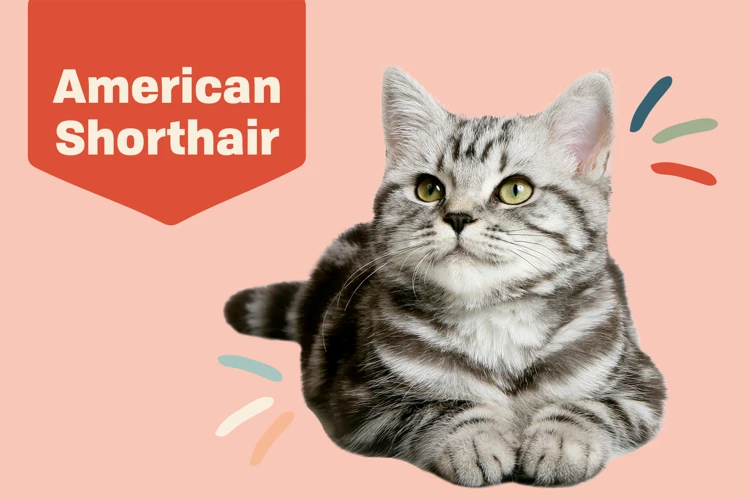
Maintaining proper grooming for your American Shorthair cat is crucial to their overall health and well-being. A clean and well-groomed cat not only looks good but also feels good. Regular grooming can help prevent certain health issues such as matting, hairballs, and infections. In this section, we will discuss different aspects of grooming to help you keep your American Shorthair cat healthy and happy.
Brushing
Regular brushing is an essential part of keeping your American Shorthair cat’s coat and skin healthy. Brushing helps remove dirt, loose hair, and mats, preventing skin irritation and hairballs. It also promotes circulation and distributes the cat’s natural oils throughout their coat, giving it a shiny, healthy appearance. Here are some tips for effective brushing:
- Set up a regular brushing schedule: Depending on the length of your cat’s hair, you may need to brush them every day, every other day or once a week. Consistency is key to maintaining healthy coats.
- Choose the right brush: There are several types of brushes available, including slicker brushes, bristle brushes, and grooming gloves. Slicker brushes are best for removing loose hair and mats, while bristle brushes are ideal for cats with short hair like the American Shorthair. Grooming gloves are great for sensitive cats who are nervous about being brushed.
- Start slowly and be gentle: Introduce your cat to brushing gradually, and use a light touch at first to avoid hurting their skin. Offer them treats as a reward and talk to them in a calm, reassuring voice.
- Brush in the direction of hair growth: Brushing against the grain can cause discomfort and pulling. Start at the head and work your way down the body, using long, gentle strokes.
- Pay attention to sensitive areas: Cats can be sensitive about certain areas, such as their belly and paws. Use a lighter touch on these areas and only brush them for a few seconds at a time.
- Check for skin conditions: While brushing your cat, look for any signs of skin irritation, such as bumps or redness. If you notice any issues, consult with your veterinarian for proper treatment.
Regular brushing not only keeps your cat’s coat and skin healthy but also helps you bond with your furry companion. If you notice any issues with your cat’s coat or skin, such as excessive shedding or skin irritation, it’s always best to consult with your veterinarian for proper diagnosis and treatment. For example, if you notice that your American Shorthair is scratching excessively, they may have allergies, and you can refer to our article on allergies in American Shorthairs.
Bathing
Bathing your American Shorthair cat is not always necessary, as cats are well-known for their excellent self-grooming abilities. However, if your cat has gotten into something particularly dirty or smelly, or if they have long hair that tends to get matted, then a bath may be in order. Before giving your cat a bath, you should gather all the necessary supplies, including a cat-friendly shampoo, a pitcher or hose for rinsing, and several towels for drying. It’s important to choose a shampoo that is specifically designed for cats, as human shampoos and soaps can be too harsh and drying for feline skin.
Step-by-step guide for bathing your American Shorthair cat:
- Fill a sink or small tub with a few inches of warm water (not hot)
- Place a non-slip mat at the bottom of the tub or sink to prevent your cat from slipping
- Get your cat used to the water by gently pouring some water over their back, using a cup or pitcher
- Saturate your cat’s fur with the water, being careful to avoid getting water in their ears and eyes
- Apply a small amount of cat shampoo to your cat’s fur, working it in gently and avoiding the face and head
- Rinse your cat thoroughly with clean water, making sure to remove all traces of shampoo
- Use a towel to gently dry your cat off, and try to keep them warm until they are fully dry
Regularly bathing your cat is not necessary, and doing so too frequently can strip their skin of natural oils and dry it out, potentially leading to skin irritation and other health issues. In general, most American Shorthair cats will only need a bath a few times a year or when they become excessively dirty. Be sure to pay attention to your cat’s individual grooming needs and adjust their bathing schedule accordingly.
If your cat has a medical condition or special needs, such as arthritis or diabetes, it’s important to consult with your veterinarian before giving them a bath. They may have specific recommendations or precautions for bathing your cat safely and comfortably. To learn more about caring for an American Shorthair cat with arthritis or diabetes, check out our related articles on arthritis in American Shorthair cats and diabetes care for American Shorthair cats.
Nail Care
Keeping your American Shorthair cat’s nails trimmed and well-maintained is an important part of their overall health and grooming routine. Long nails can cause discomfort, pain, and even lead to infections. Here are some tips for proper nail care:
- Get your cat accustomed to having their paws touched: Before attempting to trim your cat’s nails, it’s important to get them used to having their paws handled. Start by gently touching their paws and giving them treats to associate the sensation with positive experiences.
- Invest in quality nail trimmers: Using a good quality pair of nail trimmers will ensure a clean and safe cut. Avoid using scissors or human nail clippers, which can splinter and damage the nail.
- Trimming technique: Hold your cat’s paw gently but firmly and trim only the sharp tip of the nail, avoiding the pink area known as the quick which contains blood vessels and nerves. Cutting the quick can cause pain and bleeding. If you accidentally cut the quick, use styptic powder to stop the bleeding.
- Frequency of trimming: How often you trim your cat’s nails will depend on their activity level. Indoor cats may need their nails trimmed every few weeks, while outdoor cats may wear their nails down naturally.
- Scratching posts: Provide your cat with a scratching post to help them maintain their nails. Encourage them to use it by placing it in a prominent location and rewarding them when they use it.
By following these nail care tips, you can help keep your American Shorthair cat’s nails healthy and comfortable, preventing potential health issues caused by neglecting their nail care.
Exercise and Play
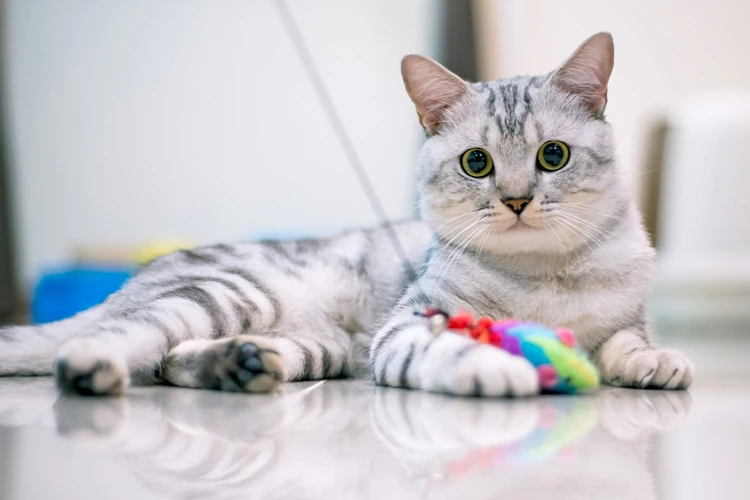
Cats are known for being curious and energetic animals, and American Shorthair cats are no exception. Exercise and play are crucial components of maintaining your American Shorthair cat’s health and happiness , so it’s important to make sure they get enough physical activity each day. This doesn’t just mean sending your cat outside to wander around – there are plenty of ways you can help them burn off energy and keep their minds stimulated, even if you live in a small space or have limited time to devote to playtime. Let’s explore some fun and effective ways to help your American Shorthair stay active and engaged.
Types of Exercise
When it comes to keeping your American Shorthair cat healthy, regular exercise is crucial. Not only does exercise keep your cat physically fit, but it also helps to maintain their mental and emotional well-being. There are several types of exercise that your cat can benefit from, including:
| Type of Exercise | Description |
|---|---|
| Interactive play | Games that involve you and your cat, such as playing fetch or using a laser pointer. This type of exercise is important for strengthening the bond between you and your cat. |
| Independent play | Toys that your cat can play with on their own, such as crinkle balls, catnip toys, or puzzle feeders. This type of exercise can help to keep your cat mentally stimulated. |
| Climbing | Providing your cat with a cat tree or shelving system can help to satisfy their natural instinct to climb. This type of exercise can also help to keep your cat’s nails trimmed. |
| Scratching | Having a scratching post or pad can encourage your cat to exercise their claws and stretch their muscles. |
It’s important to note that different cats have different preferences when it comes to exercise. Some may prefer interactive play, while others may gravitate more towards climbing or scratching. It’s important to pay attention to your cat’s behavior and adjust their exercise routine accordingly. By providing a variety of exercise options and sticking to a consistent routine, you can help to keep your American Shorthair cat healthy and happy.
Toys and Activities
A crucial part of keeping an American Shorthair cat healthy is providing them with plenty of toys and activities to keep them active and engaged. Here are some examples of toys and activities that you can incorporate into your cat’s routine:
| Toy/Activity | Description |
|---|---|
| Laser pointer | Shining a laser pointer on the ground or walls can be a fun way to get your cat moving and chasing after the red dot. |
| Feather wand | A feather wand or toy attached to a stick can be a great way to get your cat jumping and swatting at the toy. |
| Interactive puzzle toys | There are a variety of puzzle toys on the market that require your cat to figure out how to get the treat or toy inside, keeping them mentally stimulated. |
| Cardboard boxes | Cats love to play and hide in cardboard boxes, making them a cheap and easy option for playtime. |
| Cat trees | A cat tree or scratching post can provide your cat with an outlet for climbing and scratching, as well as a cozy place to nap. |
| DIY toys | You can also get creative and make your own cat toys using items like socks or old t-shirts. |
It’s important to note that some toys may not be safe for your cat, such as toys with small parts or strings that could be ingested. Always supervise your cat during playtime and choose toys that are appropriate for their size and play style.
In addition to providing toys and activities, you can also encourage activity by playing with your cat regularly and incorporating movement into their daily routine. For example, you could try tossing a toy across the room and having your cat chase after it, or placing their food and water bowls in different parts of the house to encourage movement throughout the day.
Incorporating playtime and activities into your American Shorthair cat’s routine is a simple but effective way to promote their health and well-being.
Encouraging Activity
As with any other pet, American Shorthair cats need regular exercise to maintain their physical and emotional health. While some cats may not be as active or playful as others, there are many ways to encourage activity and play in your furry friend.
1. Make Playtime a Regular Routine
One of the best ways to encourage activity in your American Shorthair is to make playtime a regular part of their daily routine. Whether it’s 10 minutes in the morning or an hour before bed, scheduling dedicated playtime can help your cat get the exercise they need. Consider using toys that stimulate their hunting instincts, such as feather wands or laser pointers.
2. Create an Active Environment
Another way to encourage activity is to create a stimulating and active environment for your cat. This could include setting up a cat tree or scratching post, hiding treats around the room, or leaving out toys that they can play with on their own. You could also consider making use of vertical space in your home by installing shelves or perches that your cat can jump on.
| Ways to encourage activity: | Examples: |
|---|---|
| Set up a stimulating environment | cat tree, scratching post, hiding treats, leaving toys out |
| Introduce interactive toys | feather wands, laser pointers, puzzle toys |
| Use food to promote activity | place treats in hard-to-reach areas, use interactive food dispensers |
| Design an indoor agility course | create obstacles using household items such as boxes or tunnels |
3. Introduce Interactive Toys
Interactive toys can be a great way to promote activity and play in cats. Consider toys that can be batted around, chased, or pounced on, such as feather wands, laser pointers, or puzzle toys. These types of toys can help stimulate your cat’s mind as well as their body, and provide a fun and engaging way to get exercise.
4. Use Food to Promote Activity
Another way to encourage your cat to be more active is to use food and treats strategically. For example, you could place treats in hard-to-reach areas around the house, or use interactive food dispensers that require your cat to work for their food. This can help keep your cat engaged and interested for longer periods of time, and encourage them to be more active.
5. Design an Indoor Agility Course
For cats that are particularly athletic or high-energy, designing an indoor agility course can be a fun and challenging way to encourage activity. You can create obstacles using household items such as boxes or tunnels, and encourage your cat to climb, jump, and crawl through the course. This can be a great way to promote physical and mental stimulation, and help your cat stay healthy and happy.
Medical Care
Keeping your American Shorthair cat healthy goes beyond just providing them with good nutrition, grooming, and exercise. It also means being diligent about their medical care. Regular visits to the veterinarian, vaccinations, and preventive care are all crucial in ensuring your feline friend stays happy and healthy. In this section, we will discuss the different aspects of medical care that are important for your American Shorthair cat’s well-being. So let’s dive right in!
Vaccinations and Preventive Care
One of the most important aspects of keeping your American Shorthair cat healthy is to provide them with proper vaccinations and preventive care. Vaccines help to protect cats from various viruses and diseases that could cause severe illness or even death.
Vaccinations
There are several critical vaccines that your cat should receive to ensure their health. Below is a table showing the recommended vaccines for American Shorthair cats:
| Vaccine | Description |
|---|---|
| FVRCP | A vaccine that protects against feline viral rhinotracheitis (FVR), calicivirus (C), and panleukopenia (P). |
| Rabies | A vaccine that protects against rabies, a virus that can be transmitted to humans through cat bites or scratches. |
| Feline leukemia virus (FeLV) | A vaccine that protects against FeLV, a virus that can cause several health issues, including cancer and immunodeficiency disorders. |
It’s essential to consult with your veterinarian to determine the appropriate vaccination schedule for your American Shorthair cat. Kittens are typically vaccinated at six to eight weeks, followed by booster shots every three to four weeks until they’re 16 weeks old.
Preventive Care
Preventive care plays a fundamental role in maintaining your American Shorthair cat’s overall health. Here are some essential preventive care measures you can take:
- Schedule regular check-ups with your veterinarian to monitor your cat’s health and address any concerns early.
- Offer a balanced diet of high-quality food to meet their nutritional needs.
- Keep their living environment clean and free of potential hazards.
- Practice good hygiene, including regular brushing, bathing, and nail trims.
- Provide ample opportunities for exercise and play to promote healthy physical activity and prevent obesity.
By following these steps and working with your veterinarian to ensure your American Shorthair cat receives appropriate care, you can enjoy their company for years to come.
Common Health Issues
American Shorthair cats are relatively healthy overall, but like all animals, they are susceptible to certain health issues. It is essential for cat owners to monitor their pet’s health and take action if any symptoms or changes in behavior occur. Here are some common health issues that American Shorthair cats may face:
| Health Issue | Symptoms | Treatment |
| Obesity | Difficulty jumping or climbing, lethargy, excessive panting | Weight management through diet and exercise |
| Flea infestation | Excessive scratching and grooming, presence of fleas and “flea dirt” in fur | Flea prevention and treatment through topical medication or collars |
| Urinary tract infections | Excessive licking of genital area, urinating outside of the litter box, straining to urinate | Prescription antibiotics from a veterinarian |
| Dental disease | Bad breath, swollen gums, visible tartar buildup on teeth | Dental cleaning and potential extractions recommended by a veterinarian |
| Diabetes | Increased thirst and urination, weight loss, lethargy | Insulin injections and dietary changes under the guidance of a veterinarian |
| Upper respiratory infections | Sneezing, coughing, runny nose and eyes, decreased appetite | Antibiotics prescribed by a veterinarian |
Regular veterinary checkups can help catch any potential health issues early on and prevent them from becoming more serious. Additionally, keeping your American Shorthair cat on a healthy diet and providing opportunities for exercise can go a long way in maintaining their overall health and well-being.
Regular Checkups
Routine checkups are essential to keep your American Shorthair cat in good health. Regular checkups can help identify health issues early on and prevent them from worsening. To ensure the health of your furry friend, it is important to schedule regular checkups with your veterinarian regularly.
During checkups, your veterinarian will perform a physical examination to assess your cat’s overall health. They will check for any abnormalities, such as lumps or bumps, and assess your cat’s weight, eyes, ears, teeth, skin, and coat. They will also take your cat’s temperature and listen to their heart and lungs with a stethoscope to check for any abnormalities.
In addition to the physical examination, your veterinarian may recommend additional tests to check for any underlying health issues. These tests may include blood work, urinalysis, or x-rays. Routine checkups also provide an opportunity for your veterinarian to discuss any concerns you may have about your cat’s health, including behavioral issues, nutrition, and exercise.
Table: Importance of Regular Checkups
| Benefits | Explanation |
| Early detection of health issues | Regular checkups can identify health issues early on, when they can often be treated more effectively. |
| Prevention of health issues | Regular checkups can help prevent health issues from arising in the first place. For example, regular dental cleanings can prevent dental disease. |
| Peace of mind | Regular checkups can provide peace of mind, knowing that your cat is healthy and well-cared for. |
| Bonding with your veterinarian | Regular checkups provide an opportunity to build a relationship with your veterinarian, which can be helpful in case of an emergency. |
Regular checkups are important for maintaining your American Shorthair cat’s health and well-being. By scheduling regular checkups with your veterinarian, you can help ensure that your cat is healthy and happy for years to come.
Conclusion
In conclusion, taking care of your American Shorthair cat is crucial for their overall health and well-being. By following the steps outlined in this article, you can provide your furry friend with the necessary nutrition, grooming, exercise, and medical care they need to thrive.
Remember to feed your cat a well-balanced diet tailored to their unique needs. This means choosing high-quality food and ensuring that portion sizes are appropriate. Additionally, proper hydration is essential, so make sure to provide plenty of fresh water.
Regular grooming is also important for your cat’s health. Brushing your cat’s fur helps to remove dead hair and prevent matting, while baths and nail care can prevent infections and discomfort. This helps your cat maintain a healthy and shiny coat while minimizing the chances of skin problems.
Encouraging exercise and play is also important for your cat’s health and happiness. Provide your cat with engaging toys and activities, and make sure to spend time playing with them regularly. This can help prevent boredom and stress, and contribute to a healthy lifestyle.
Finally, take your cat to the vet for regular checkups. Regular preventive care and vaccinations can help your cat stay healthy and prevent diseases. If any health issues do arise, early detection can lead to more effective treatment.
By taking these steps, you can help ensure that your American Shorthair cat has a happy and healthy life. Remember to provide plenty of love and attention, too – after all, that’s what our furry friends deserve!
Frequently Asked Questions
Is it important to feed my American Shorthair cat a specific type of food?
Yes, it’s important to feed your American Shorthair cat a well-balanced diet specifically formulated for cats to ensure they get the necessary nutrients and vitamins for optimal health.
How much should I feed my American Shorthair cat?
The amount you should feed your cat depends on their age, weight, and activity level. It’s best to consult with your veterinarian to determine the proper portion size for your cat.
How often should I brush my American Shorthair cat’s fur?
You should brush your cat’s fur at least once a week to prevent matting and hairballs. However, cats with longer hair may require more frequent brushing.
What type of shampoo should I use for my American Shorthair cat?
You should use a mild, cat-specific shampoo to avoid irritating their skin. Your veterinarian can recommend a suitable brand.
Do I need to trim my American Shorthair cat’s nails?
Yes, regularly trimming your cat’s nails can prevent them from becoming overgrown and causing discomfort or damaging furniture and other household items.
What type of exercise is best for American Shorthair cats?
American Shorthair cats enjoy a variety of exercises, including play sessions with toys or interactive games. However, they are not particularly fond of high-intensity exercise and should mainly be encouraged to play and be active.
Are there any common health issues that typically affect American Shorthair cats?
Unlike other breeds, American Shorthair cats do not have any specific health conditions. However, they can still develop common ailments such as obesity, dental problems, and lower urinary tract disease.
How often should I take my American Shorthair cat to the vet?
It’s recommended to take your cat to the vet for a checkup at least once a year. However, if your cat has any ongoing medical issues, they may require more frequent visits.
What vaccinations are necessary for my American Shorthair cat?
Core vaccinations, including rabies, feline distemper, and feline calicivirus, are recommended for all cats, including American Shorthairs. However, your veterinarian may recommend additional vaccinations depending on your cat’s lifestyle and environment.
What can I do to encourage my American Shorthair cat to drink more water?
You can encourage your cat to drink more water by providing fresh, clean water in a variety of locations throughout your home. Additionally, you can add a water fountain or offer wet food containing additional moisture.

